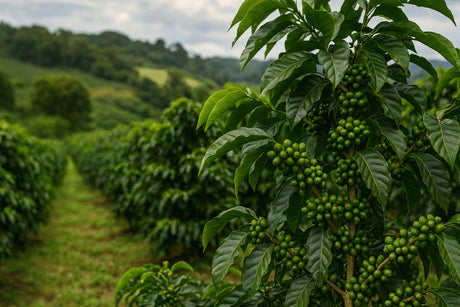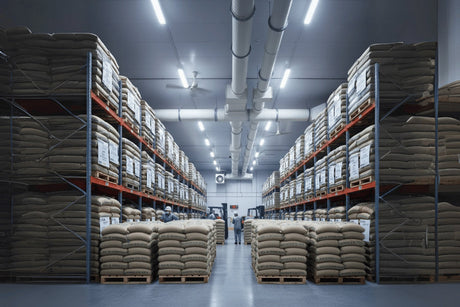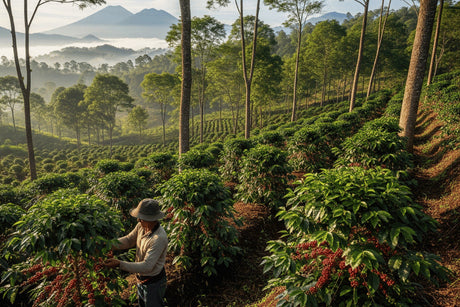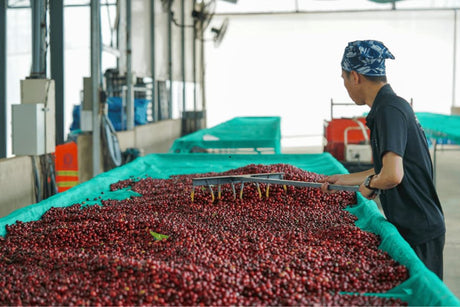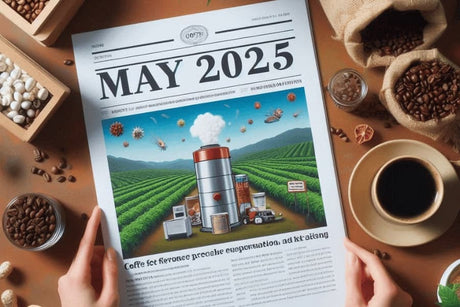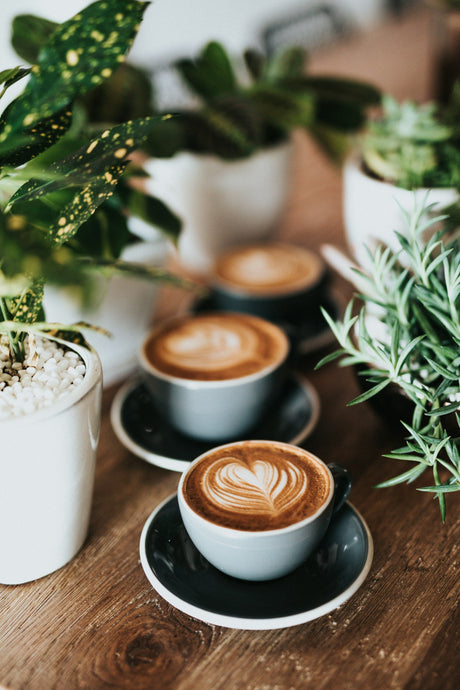mycuppa January 2014 Newsletter
Happy New Year
We wish all our wonderful customers a Happy New Year.
One of the most enjoyable moments for me at this time of year is the chance to reflect upon the year that was and think about the year ahead.
There is something very special about reading the newspapers in late December, lying on a comfortable sofa (drinking coffee, of course).
I adore reading features containing the key highlights of the year, finding myself stunned when a major event that occurred just a mere eight months previous has been long forgotten from memory.
Such is the fast pace of our modern lifestyles.
In this month's news, we would like to identify some real stand-out coffees that left a lasting impression on the mycuppa team.
The caveat with any coffee recommendation is that roasted coffees are a complex set of perceptions - one person's favourite does not mean you will like or even enjoy it.
Brazil
Generally regarded as "boring" by the coffee industry, Brazil remains the #1 supplier of coffee worldwide, the largest producer and many times bigger than the #2 origin and 5 to 10 times larger than some of the more popular origins.
Why is Brazil so big?
Because the plantations are vast, the quality is relatively consistent, and every coffee roasting company includes Brazilian coffee as a base for one or many of their blends.
Brazil coffee beans have, for a very long time, been the essential ingredient in coffee blends.
In 2013, we discovered specialty Brazil coffee beans and renewed our enthusiasm.
We picked up a lot of different types ranking in the 82 - 86 point grade, which makes these coffees some of the best available in Australia.
Brazil coffees are exceptional in milk - the acid balance is sublime, and when you hit those milk chocolate notes, it's superb.
Cambara Yellow Bourbon Natural and the Cerrado were the best coffees we cupped this year.
Colombia
Welcome back, old friend.
Colombia is a name that has long been associated with the richest cup.
The growing conditions are perfect, and the farmers continue to raise the bar with their focus on quality during the processing stage.
Colombia was hit hard with Roya (Coffee Leaf Rust) in late 2009/early 2010, caused by excessive rain courtesy of the La Nina weather patterns.
This event also triggered a massive spike in coffee prices as the C-Index almost doubled in 6 months.
Around 30+% of the crops were destroyed, and a major replanting program used more disease-resilient varietals.
The rewards from the replanting and stable weather patterns have delivered superb coffees.
Our Inza and Popayan coffees are never better - zesty, intense, sweet candy.
El Salvador
It is a coffee that flies under the radar for many mycuppa customers - I am surprised that this is not a higher seller.
We have had the brilliant San Emilio in store now for many months.
This is a pulped natural El Salvador, which is quite rare as most El Salvador coffees are fully washed.
San Emilio has perfect balance and a very long chocolate finish in milk.
In many respects, this is the perfect milk-based espresso coffee bean.
Panama Coffee Beans
Creamy stone fruit with a beautifully sweet finish.
One of the cleanest cups in our range - this is a stunning coffee.
Extremely versatile - able to perform exceptionally well as a black-only espresso, or add milk for a wonderful acid finish that will tantalize your palate.
Sumatra
Blue Batak and Tano Batak were amazing discoveries.
These coffees are perfect examples of how Sumatran coffees should be prepared.
They are costly - all-quality Sumatrans typically fetch a 30 - 40 % price premium over comparable qualities from other origins.
Sumatran coffees have a thick body, sweet mid-palate, a hint of spice and a very long finish.
What's NEW in 2014
A New Year creates an opportunity for us to think about what we can do differently in the future.
How can we improve?
What sort of innovation can we introduce to keep increasing our position as a leader in the specialty coffee industry?
Something we are very excited about is a new coffee that has been extensively engineered over the last six months.
When we develop a new blend, it usually takes about a month or so to create the basic foundation.
Then, minor tweaks are performed as we evaluate feedback and adjust for seasonal variations in green bean sourcing.
This new coffee is radically different from the coffee beans in our extensive portfolio - roasted using a profile and philosophy that are not like our others.
We had to review and re-engineer everything we had done previously.
Redemption of the Spro is nothing less than a selfish, focused and deliberate effort to create something special to suit those espresso purists worshipping a perfect extraction.
Throw out the rulebooks, turn the legacy upside down, and create a revolution.
We make no excuses, and we offer no promises.
Roasting for milk-based coffees and pure espresso requires a different approach.
Spro was created to redeem all the sins of the past in terms of offending espresso lovers.
Firstly, it is roasted lighter than all our other coffees.
Roasting this way means there will be a smaller body and super-long finish you have become accustomed to with most of our coffees.
Secondly, it is a blend of coffees we will not disclose.
Why? Because there are 1000+ brands of coffee being sold in Australia, and too many coffee roasting companies need to be more active and find it only too easy to copy the hard-working innovators in this industry.
Thirdly - it's seasonal.
Seasonal means that Redemption of the Spro changes periodically.
If we find a better bean or a different combination that produces a superior result, we will implement it quickly rather than play the game of slow taper out/in, which can take weeks or months.
Fourthly - it's about celebrating the original character of the coffee beans, and this means fruit - or, more accurately, lots of fruit.
Most of the chocolate, caramel and cocoa notes we have become accustomed to in our milk-based coffees will be dominated by complex fruits of berry, stone fruits, tropical, wine-like notes.
We hope you like it.


